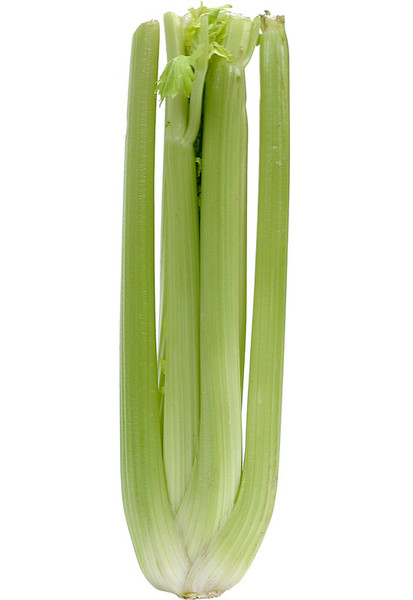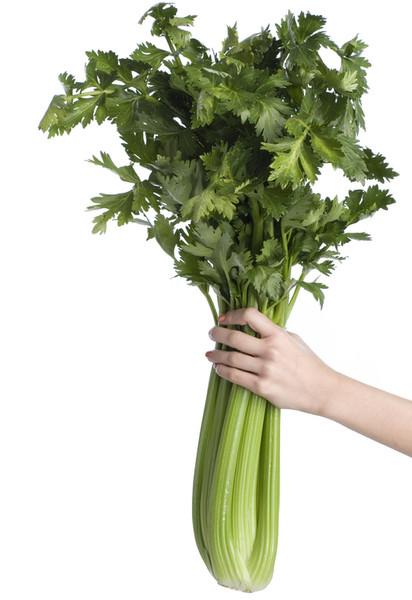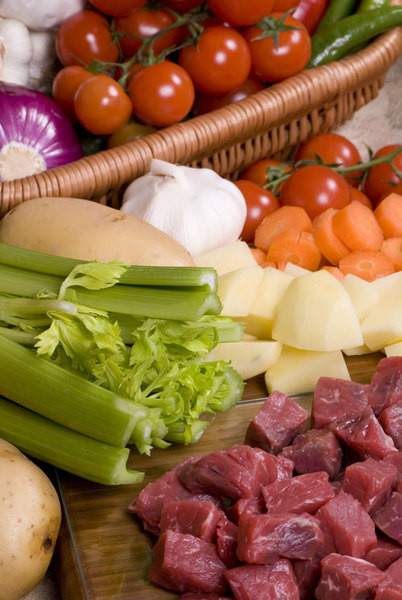 Celery useful properties andcontraindicationsThe homeland of this plant is the Mediterranean, where you can still find wild forms of celery growing on the sandy soils of the coast. The ancient Greeks, Romans and Egyptians grew celery for sale and for personal use. In the 5th-6th centuries AD, celery appeared in Asia, where it found a huge number of uses, while in Europe this plant was forgotten for a long time. For some unknown reason, celery fell out of favor with the Florentine churchmen and was banned. In the 16th-18th centuries, Europeans rediscovered the wonderful properties of celery and began to use it as a table decoration, as a seasoning and as a juicy element of salads. Today, celery enjoys the glory of a "glamorous" plant. Many people who care about their health, longevity and beauty regularly drink celery juice and eat its stems and roots as part of tasty and healthy dishes and raw. Celery juice is included in some energy drinks. What attracts this plant to healthy lifestyle supporters? First of all, vitamins. One thin celery stalk contains 6-7% of the daily dose of vitamins A and C and a large amount of vitamins B1, B2, K and PP. Celery is also rich in other useful substances: iron, potassium, magnesium, phosphorus, folic acid, carotene, phytoncides and flavonoids. Celery roots contain up to 14% proteins. Unlike other vegetables, celery contains organic sodium, which replaces regular salt. Celery salt, made from celery roots, increases the body's absorption of nutrients and does not accumulate in the joints. Due to the fact that the nutrients in celery are perfectly balanced and easily absorbed, celery has a A diet that involves regular consumption of celery juice or fresh stalks helps to lose weight without losing cheerfulness. Essential oils contained in celery roots and stalks have disinfectant properties. The celery diet is recommended for allergies, inflammations, colds, thyroid and genitourinary diseases. Celery lowers blood pressure, improves immunity, helps to cope with nervous and physical stress, strengthens the heart muscle.
Celery useful properties andcontraindicationsThe homeland of this plant is the Mediterranean, where you can still find wild forms of celery growing on the sandy soils of the coast. The ancient Greeks, Romans and Egyptians grew celery for sale and for personal use. In the 5th-6th centuries AD, celery appeared in Asia, where it found a huge number of uses, while in Europe this plant was forgotten for a long time. For some unknown reason, celery fell out of favor with the Florentine churchmen and was banned. In the 16th-18th centuries, Europeans rediscovered the wonderful properties of celery and began to use it as a table decoration, as a seasoning and as a juicy element of salads. Today, celery enjoys the glory of a "glamorous" plant. Many people who care about their health, longevity and beauty regularly drink celery juice and eat its stems and roots as part of tasty and healthy dishes and raw. Celery juice is included in some energy drinks. What attracts this plant to healthy lifestyle supporters? First of all, vitamins. One thin celery stalk contains 6-7% of the daily dose of vitamins A and C and a large amount of vitamins B1, B2, K and PP. Celery is also rich in other useful substances: iron, potassium, magnesium, phosphorus, folic acid, carotene, phytoncides and flavonoids. Celery roots contain up to 14% proteins. Unlike other vegetables, celery contains organic sodium, which replaces regular salt. Celery salt, made from celery roots, increases the body's absorption of nutrients and does not accumulate in the joints. Due to the fact that the nutrients in celery are perfectly balanced and easily absorbed, celery has a A diet that involves regular consumption of celery juice or fresh stalks helps to lose weight without losing cheerfulness. Essential oils contained in celery roots and stalks have disinfectant properties. The celery diet is recommended for allergies, inflammations, colds, thyroid and genitourinary diseases. Celery lowers blood pressure, improves immunity, helps to cope with nervous and physical stress, strengthens the heart muscle. High in fiber and low incalorie content make celery a product with a “negative calorie content”. This means that the body receives less energy from celery than it spends on its assimilation. helps to cope with the feeling of hunger and gives a boost of energy for the whole day. Celery juice cleanses the blood of toxins, prevents the formation of blood clots and tumors. Even a small amount of fresh celery can improve the condition of the skin and hair. Fresh celery reduces the likelihood of tumors and ulcers. Recently, celery was discovered to neutralize carcinogens contained in tobacco smoke. Celery juice is used in folk medicine as a means of improving digestion and hematopoiesis, normalizing metabolism and removing stones. It is effective for rheumatism, kidney diseases, intestines and pancreas. Celery greens relieve irritation, inflammation, treat burns, wounds and ulcers. Freshly squeezed celery juice normalizes body temperature and helps to endure dry, hot weather. A mixture of carrot and celery juices provides the body with essential vitamins and minerals. Modern celery is not as bitter as it was known before the 20th century. Breeders have developed three types of celery, which in itself speaks of the value of this plant. The most popular is "petiolate" celery, which has juicy long stalks. "Root" celery is valued for its tender and aromatic root. "Leaf" celery is used as a spice with a strong, fresh smell. Celery seeds are rich in essential oils and have a spicy smell, which makes them an exquisite spice for all savory dishes, especially for salads, goulashes, sauces and gravies. Celery seed is a rare spice that can only be found in specialized stores. Celery is easy to grow in open ground in a warm climate, but in central Russia it requires additional care: preparation of seedlings, regular watering and loosening. Celery is a biennial plant that produces root crops only in the second year of life. Leaf and petiole celery yields a harvest in the first year. Adult plants tolerate frosts well, seedlings need protection. Celery grows well on loamy and sandy loam soils and does not tolerate acidic soils.
High in fiber and low incalorie content make celery a product with a “negative calorie content”. This means that the body receives less energy from celery than it spends on its assimilation. helps to cope with the feeling of hunger and gives a boost of energy for the whole day. Celery juice cleanses the blood of toxins, prevents the formation of blood clots and tumors. Even a small amount of fresh celery can improve the condition of the skin and hair. Fresh celery reduces the likelihood of tumors and ulcers. Recently, celery was discovered to neutralize carcinogens contained in tobacco smoke. Celery juice is used in folk medicine as a means of improving digestion and hematopoiesis, normalizing metabolism and removing stones. It is effective for rheumatism, kidney diseases, intestines and pancreas. Celery greens relieve irritation, inflammation, treat burns, wounds and ulcers. Freshly squeezed celery juice normalizes body temperature and helps to endure dry, hot weather. A mixture of carrot and celery juices provides the body with essential vitamins and minerals. Modern celery is not as bitter as it was known before the 20th century. Breeders have developed three types of celery, which in itself speaks of the value of this plant. The most popular is "petiolate" celery, which has juicy long stalks. "Root" celery is valued for its tender and aromatic root. "Leaf" celery is used as a spice with a strong, fresh smell. Celery seeds are rich in essential oils and have a spicy smell, which makes them an exquisite spice for all savory dishes, especially for salads, goulashes, sauces and gravies. Celery seed is a rare spice that can only be found in specialized stores. Celery is easy to grow in open ground in a warm climate, but in central Russia it requires additional care: preparation of seedlings, regular watering and loosening. Celery is a biennial plant that produces root crops only in the second year of life. Leaf and petiole celery yields a harvest in the first year. Adult plants tolerate frosts well, seedlings need protection. Celery grows well on loamy and sandy loam soils and does not tolerate acidic soils. Celery root is used in soups and broths.meat and vegetable dishes. To add flavor to the soup, celery root should be carefully peeled, cut lengthwise and fried without oil. To preserve the vitamins in celery root, when cooking it should be dipped in boiling water and cooked in a tightly sealed container. The water left over from cooking celery can be used to make sauces and soups, as it is rich in nutrients. Fresh celery root goes well with carrots and apples. Stewed root can be used to make vitamin puree. Grated celery root serves as a vitamin supplement for vegetable juices. Raw stalks are added to salads, and stewed ones are used as a side dish for various dishes. Like all vegetables, celery can be fried, stewed, steamed and baked. Green leaves are a universal seasoning for first and second courses. All parts of celery can be used for preserving vegetables. Peeled celery roots will not darken if kept in salted water. Braising in their own juices instead of frying will preserve the beneficial substances of the celery root. Finely chopped root releases more aromatic substances when stewed. Celery leaves can be preserved for the winter by mixing them with salt (200 g of salt per 1 kg of finely chopped leaves). Crushed leaves can be used instead of salt. Celery salt from root extract or from a mixture of dried celery seeds with salt is used instead of regular salt and adds piquancy to any dish. Celery salt does not store for long, it should be bought in small quantities.
Celery root is used in soups and broths.meat and vegetable dishes. To add flavor to the soup, celery root should be carefully peeled, cut lengthwise and fried without oil. To preserve the vitamins in celery root, when cooking it should be dipped in boiling water and cooked in a tightly sealed container. The water left over from cooking celery can be used to make sauces and soups, as it is rich in nutrients. Fresh celery root goes well with carrots and apples. Stewed root can be used to make vitamin puree. Grated celery root serves as a vitamin supplement for vegetable juices. Raw stalks are added to salads, and stewed ones are used as a side dish for various dishes. Like all vegetables, celery can be fried, stewed, steamed and baked. Green leaves are a universal seasoning for first and second courses. All parts of celery can be used for preserving vegetables. Peeled celery roots will not darken if kept in salted water. Braising in their own juices instead of frying will preserve the beneficial substances of the celery root. Finely chopped root releases more aromatic substances when stewed. Celery leaves can be preserved for the winter by mixing them with salt (200 g of salt per 1 kg of finely chopped leaves). Crushed leaves can be used instead of salt. Celery salt from root extract or from a mixture of dried celery seeds with salt is used instead of regular salt and adds piquancy to any dish. Celery salt does not store for long, it should be bought in small quantities. When buying celery, pay attention to freshness.and the strength of the stems and roots. Stems and leaves should be shiny and pale green. Dark green stems are coarser, but contain large amounts of vitamin A. Avoid sluggish, yellow stems with a hollow core and dark veins. Rotted celery contains carcinogens. Fresh celery can be stored for about two weeks in the fridge if wrapped in a cloth and placed in a plastic bag or aluminum foil. Sluggish leaves can be revived before use with cold water. In order to preserve the natural verdure of the stems during cooking, the exposure time to high temperatures should be minimal. Celery stalk veins are not softened after cooking. They should be carefully removed starting from the narrow end of the stem. Celery is used in many cuisines of the world: Spanish (fish salad and tomato soup with celery), French (celery casserole with bechamel sauce, celery jelly with foie gras, celery mousse), Jewish (stewed meat with sauerkraut and celery), Irish (pie filled with meat and celery), Italian (vegetable risotto), Japanese and Korean (rice with vegetables).
When buying celery, pay attention to freshness.and the strength of the stems and roots. Stems and leaves should be shiny and pale green. Dark green stems are coarser, but contain large amounts of vitamin A. Avoid sluggish, yellow stems with a hollow core and dark veins. Rotted celery contains carcinogens. Fresh celery can be stored for about two weeks in the fridge if wrapped in a cloth and placed in a plastic bag or aluminum foil. Sluggish leaves can be revived before use with cold water. In order to preserve the natural verdure of the stems during cooking, the exposure time to high temperatures should be minimal. Celery stalk veins are not softened after cooking. They should be carefully removed starting from the narrow end of the stem. Celery is used in many cuisines of the world: Spanish (fish salad and tomato soup with celery), French (celery casserole with bechamel sauce, celery jelly with foie gras, celery mousse), Jewish (stewed meat with sauerkraut and celery), Irish (pie filled with meat and celery), Italian (vegetable risotto), Japanese and Korean (rice with vegetables).

Making Money with Desserts: Success Stories
Evgeniya Polischuk (Fedutinova) instagram:@evgeniyafedutinovavk.com/janeshomebaking– It all started with baking for family and friends. Gradually, I started posting photos of my baked goods on Instagram – and orders started coming in. I made my first custom-made cake on October 13, 2014, and a little earlier I started making macaroons and cupcakes. You could say that the business “found me”, I am very […]

Soups are cold recipes with photos
Cold cucumber soup with yogurt and lemonsorbet from the chef of the restaurant La Taverna Alexander Zhurkin Photo: Getty Images Ingredients: Plain yoghurt – 125 g Cucumber – 150 g Lemon/lime sorbet – 50 g Cocktail shrimp – 24 g Fresh ginger juice – 1 g Lime juice – 5 g Fresh orange juice – 5 g Parsley – 1 g Pink pepper – 1 g Watercress – […]

barbeque kebab
Pork tenderloin in glaze Photo:Dmitry Bayrak/dbstudioPreparation time: 20 minutes + marinating time.Calories: 454 kcal per serving.For 4 servings: 4 pork tenderloins (approximately 300 g each), 1 onion, 2 cloves of garlic, 1 tsp. lemon zest, 1 tsp. lemon juice, a pinch of ground cumin, coriander and turmeric, 1 tbsp. vegetable […]

Pierre Duacan: dietary recipes: Ducane diet
Beetroot soup Photo:Season’S, Luxury Hotels RepresentationYou will need:· Boiled beetroot – 60 g· Fresh cucumbers – 20 g· Red radish – 20 g· Green onions – 10 g· Egg – 1 pc.· Drinking mineral water – 200 g· Salt – 1 gPreparation:· Boil the egg and beetroot.· Grate the cucumbers, radish and part of the beetroot. Put everything […]





